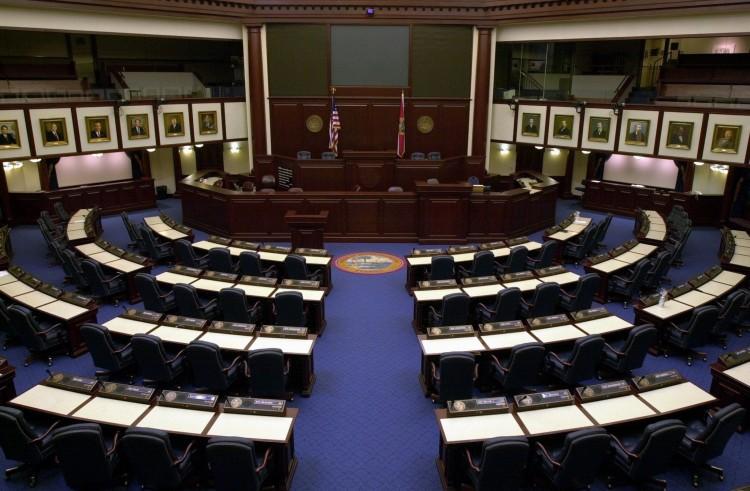Focus
sequestration
US Military Aims to Be a ‘World-Class Employer’ With New Budget
Some of the changes will make life easier for parents serving in the military...
|
The Growing Problem of a Shrinking Military
The military’s most recent budget request provides even more detail about the consequences of continued automatic spending cuts. Yet the U.S. military’s challenges did not start with the automatic budget cuts known as sequestration...
|
Dire Unemployment Situation Worsening
For months, the media has been all over the U.S. unemployment situation—keeping up the illusion that Americans are returning back to work.
|
Sequestration Decimates Government Workforce
The media and public can’t wait to see the changes in U.S. civilian workforce statistics. After all, we all care about jobs. However, despite some interesting details, the public generally doesn’t discuss the federal government’s workforce.
|
Sequestration Threatens Constitutional Right to Speedy Trial
Sequester cuts to the system of federal defenders are about to devastate the constitutionally mandated program, according to Michael S. Nachmanoff.
|
Sequestration Poses Long-Term Danger: Experts
Federal agencies are still gathering data on the impact of sequestration, but analysts say the effects may be worse than predicted.
|
Conference: Fed Contracting Despite Sequestration
Federal and state contractors and business owners seeking to become government contractors had an opportunity to learn from one another and talk one-on-one with federal contracting managers at the 10th annual GovConNet Procurement Conference.
|
IRS Spending Cut Protested by Workers
IRS spending cut: IRS workers have protested a spending cuts that were enacted by the agency.
|
Behind Air Traffic Delays: Sequester or Politics?
The Obama administration said airline delays were because of automatic spending cuts; others said it was politics.
|
Automatic Budget Cuts Largely Unseen but Ticking Away
After one month of sequestration, some are asking what all the noise was about but those on the front line tell a different story.
|
Coming to Grips With Sequestration
The term sequester or sequestration has been thrown around in speeches, articles, and testimonies. Yet many Americans get that blank look in their eyes when you ask them to explain the term.
|
Small Businesses in New York Hit By Sequester
The automatic cuts, or sequester, that was triggered Friday, will result in a $5.5 million blow to the Small Business Administration nationwide. Small businesses in New York City employ 50 percent of the workers, according to Councilwoman Diana Reyna.
|
Cuts Will Have ‘Far-reaching Effects’ Says U.S. Defense Secretary
U.S. Defense Secretary Chuck Hagel warned Friday that uncertainty surrounding sequestration was impacting U.S. defense capabilities, and if allowed to take its course would have far reaching effecs.
|
Lockheed Stocks on the Rise Since Last Minute Contract
Lockheed Martin Corp. won another contract to build F-35 fighter jets just hours before the U.S budget cuts, known as sequestration, were set to take effect Mar. 1.
|
Lockheed Martin Gets Contract Just Before Sequester
Lockheed Martin Corp., a major U.S weapons contractor was awarded a $333.7 million contract just moments before the sequester was set to take effect.
|
Sequestration: Top 4 States With Largest Losses
The sequester deadline is approaching on Mar. 1, and if President Barack Obama and Congress do not work together to come up with a plan, then automatic budget cuts will go into effect.
|
Sequestration Will Have Critical Effect on Homeland Security: Napolitano
Department of Homeland Security Secretary Janet Napolitano said that the automatic budget cuts, which would see $85 billion in across-the-board spending cuts in the first year, would force cuts across all areas of her department and set it back from further development.
|
US Military Aims to Be a ‘World-Class Employer’ With New Budget
Some of the changes will make life easier for parents serving in the military...
|
The Growing Problem of a Shrinking Military
The military’s most recent budget request provides even more detail about the consequences of continued automatic spending cuts. Yet the U.S. military’s challenges did not start with the automatic budget cuts known as sequestration...
|
Dire Unemployment Situation Worsening
For months, the media has been all over the U.S. unemployment situation—keeping up the illusion that Americans are returning back to work.
|
Sequestration Decimates Government Workforce
The media and public can’t wait to see the changes in U.S. civilian workforce statistics. After all, we all care about jobs. However, despite some interesting details, the public generally doesn’t discuss the federal government’s workforce.
|
Sequestration Threatens Constitutional Right to Speedy Trial
Sequester cuts to the system of federal defenders are about to devastate the constitutionally mandated program, according to Michael S. Nachmanoff.
|
Sequestration Poses Long-Term Danger: Experts
Federal agencies are still gathering data on the impact of sequestration, but analysts say the effects may be worse than predicted.
|
Conference: Fed Contracting Despite Sequestration
Federal and state contractors and business owners seeking to become government contractors had an opportunity to learn from one another and talk one-on-one with federal contracting managers at the 10th annual GovConNet Procurement Conference.
|
IRS Spending Cut Protested by Workers
IRS spending cut: IRS workers have protested a spending cuts that were enacted by the agency.
|
Behind Air Traffic Delays: Sequester or Politics?
The Obama administration said airline delays were because of automatic spending cuts; others said it was politics.
|
Automatic Budget Cuts Largely Unseen but Ticking Away
After one month of sequestration, some are asking what all the noise was about but those on the front line tell a different story.
|
Coming to Grips With Sequestration
The term sequester or sequestration has been thrown around in speeches, articles, and testimonies. Yet many Americans get that blank look in their eyes when you ask them to explain the term.
|
Small Businesses in New York Hit By Sequester
The automatic cuts, or sequester, that was triggered Friday, will result in a $5.5 million blow to the Small Business Administration nationwide. Small businesses in New York City employ 50 percent of the workers, according to Councilwoman Diana Reyna.
|
Cuts Will Have ‘Far-reaching Effects’ Says U.S. Defense Secretary
U.S. Defense Secretary Chuck Hagel warned Friday that uncertainty surrounding sequestration was impacting U.S. defense capabilities, and if allowed to take its course would have far reaching effecs.
|
Lockheed Stocks on the Rise Since Last Minute Contract
Lockheed Martin Corp. won another contract to build F-35 fighter jets just hours before the U.S budget cuts, known as sequestration, were set to take effect Mar. 1.
|
Lockheed Martin Gets Contract Just Before Sequester
Lockheed Martin Corp., a major U.S weapons contractor was awarded a $333.7 million contract just moments before the sequester was set to take effect.
|
Sequestration: Top 4 States With Largest Losses
The sequester deadline is approaching on Mar. 1, and if President Barack Obama and Congress do not work together to come up with a plan, then automatic budget cuts will go into effect.
|
Sequestration Will Have Critical Effect on Homeland Security: Napolitano
Department of Homeland Security Secretary Janet Napolitano said that the automatic budget cuts, which would see $85 billion in across-the-board spending cuts in the first year, would force cuts across all areas of her department and set it back from further development.
|

















